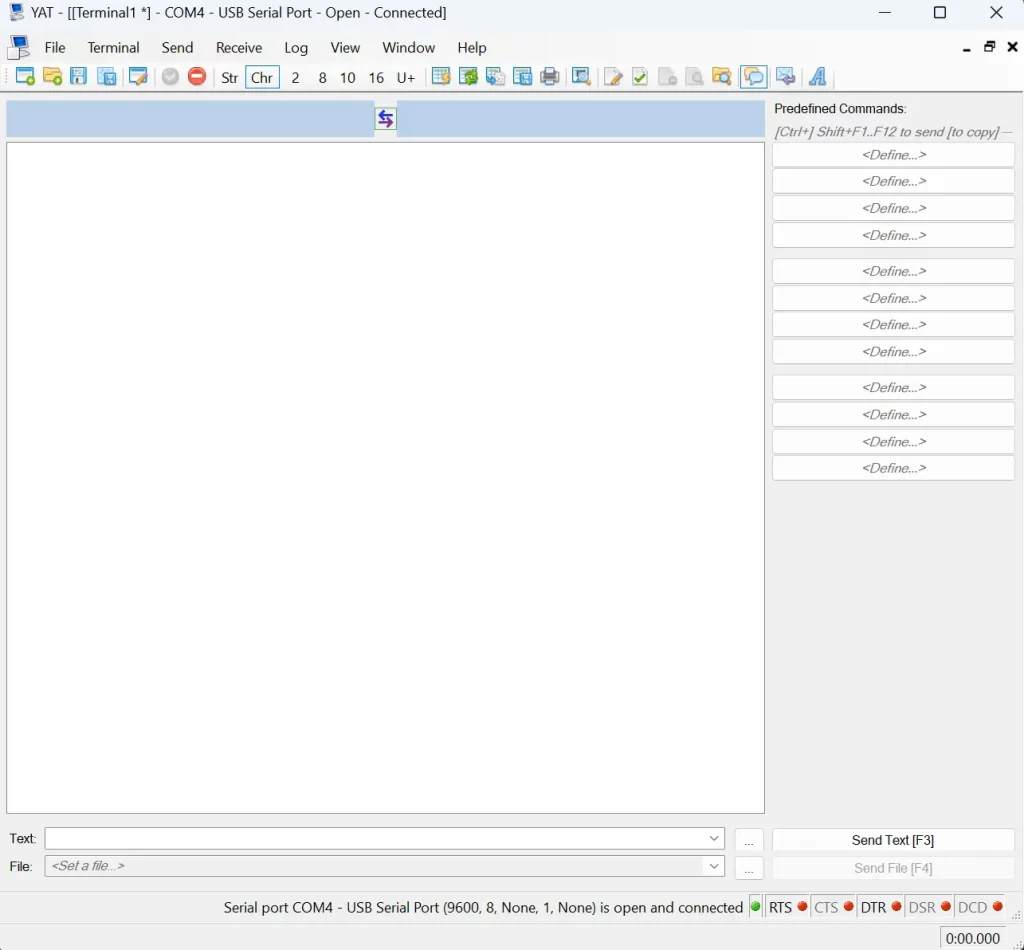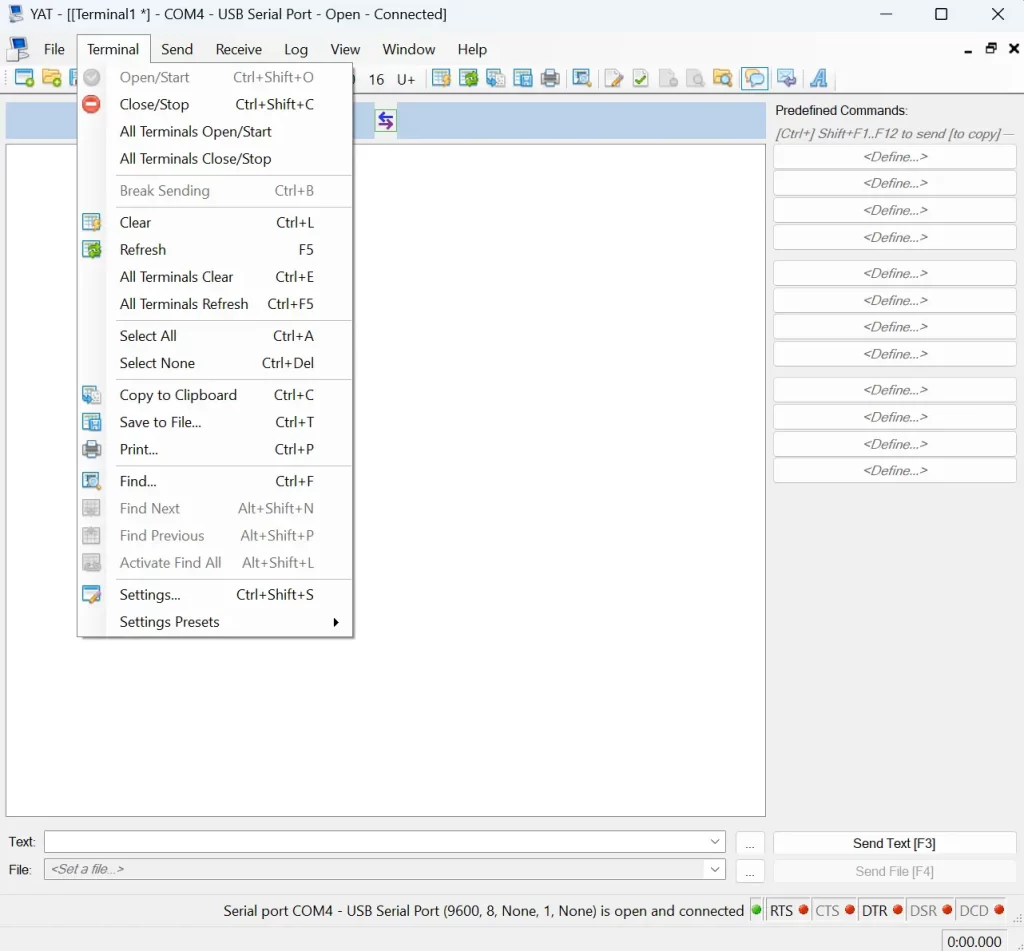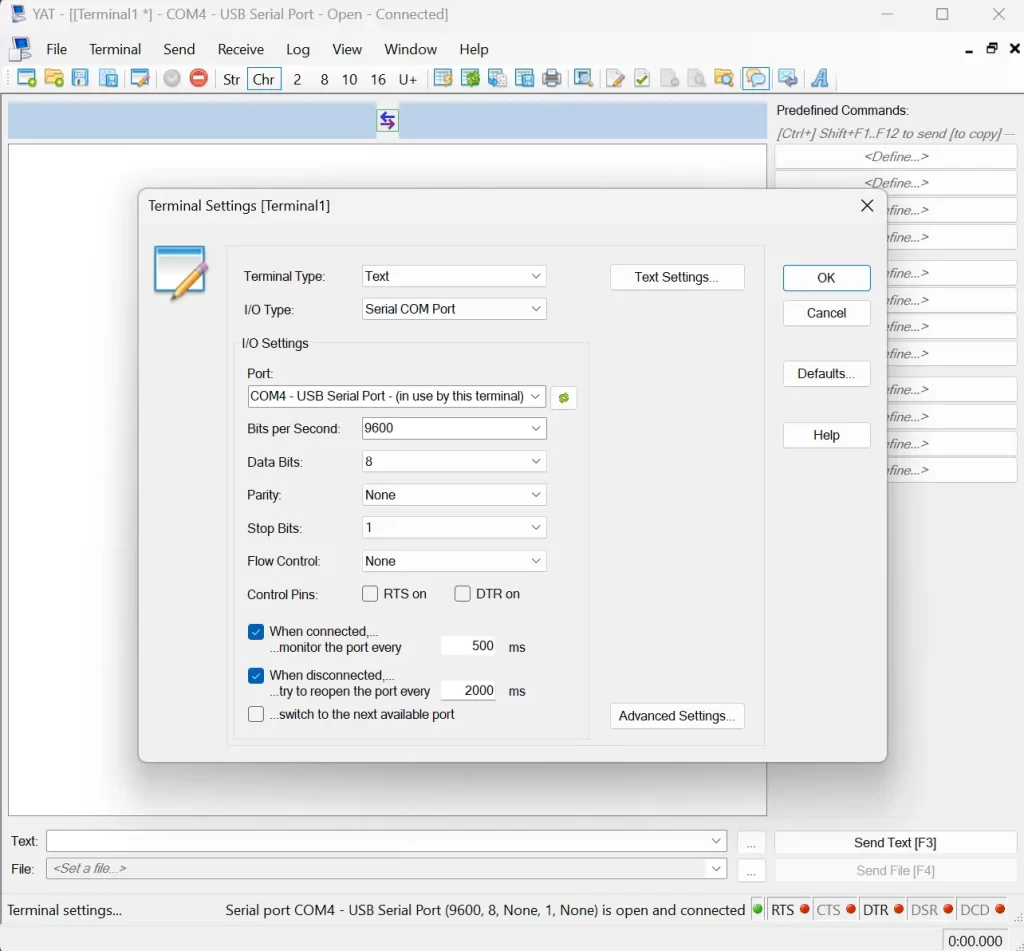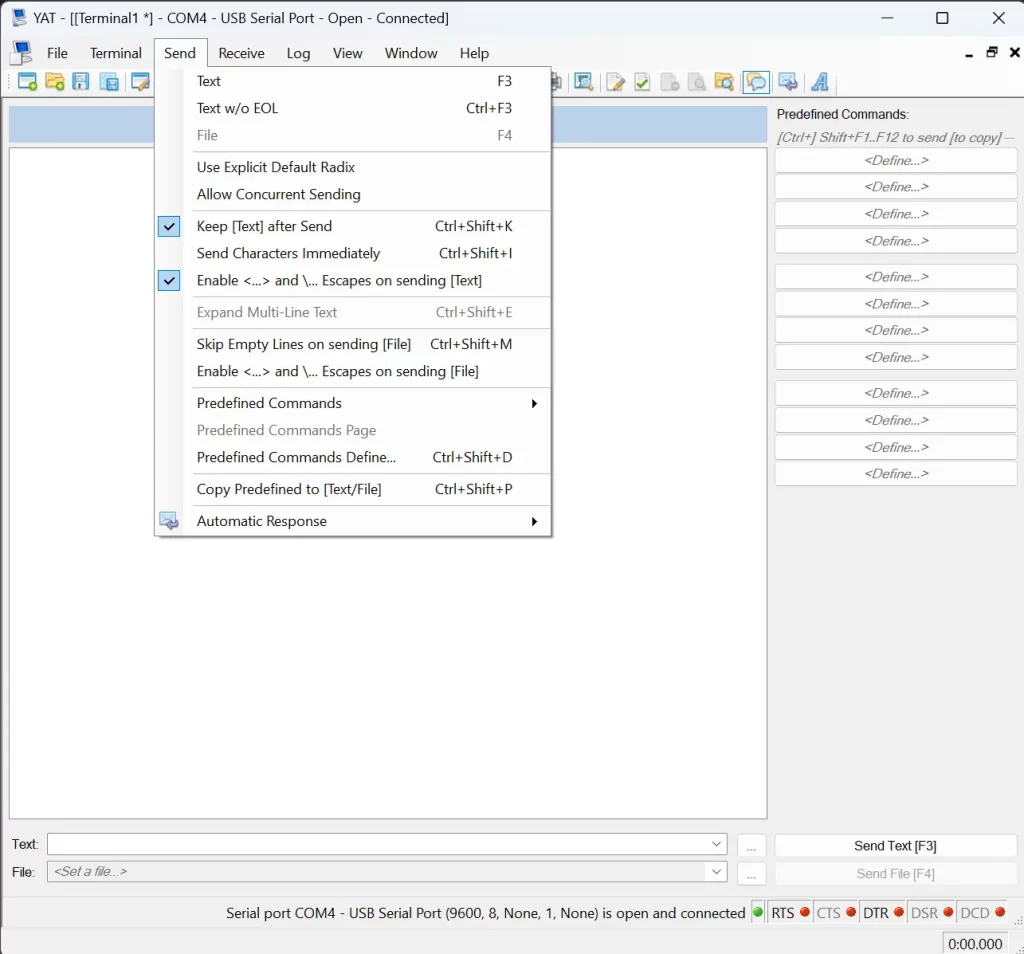This software was placed last on my list for several reasons, even though its listed features suggest it should be at the top. Let's take a look at what's being said about it.
In the general description, it states, “Supports RS-232/422/423/485 as well as TCP/IP Client/Server/AutoSocket, UDP/IP Client/Server/PairSocket, and USB Ser/HID. Optimized for simple command sets of e.g., embedded systems.”
Among its features, it reads:
- Serial terminal for engineering, testing, and debugging purposes.
- The perfect replacement for old-fashioned terminals like Windows 3.x Terminal, Hyperterminal, and others used for device communication.
- Formatting options for excellent readability, including predefined and custom color themes.
- Configurable input mode.
- Single-line text commands.
- Multi-line text commands.
- Send files with options to exclude empty lines, text patterns like comments, and special commands.
- History of recent commands.
- Unlimited number of predefined commands.
- Reorder, cut/copy/paste, export/import, and even link predefined commands and pages thereof.
- Escapes for bin/oct/dec/hex like “\h(4F 4B)” and C-style “0x4F” and “0b01001111”.
- Escapes for ASCII controls like “” and C-style “\r\n”.
- Special commands like “!(EOL)”, “!(NoEOL)”, “!(Delay(100))”, “!(LineDelay(500))”, “!(LineInterval(500))”, “!(LineRepeat(10))”.
- Option to append CRC (e.g., Modbus), with approximately 50 common CRCs predefined.
- Option to concurrently send text commands or files.
- On-the-fly change of communication settings using commands like “!(Port(10))”, “!(Baud(115200)), “!(PortSettings(115200, 8, 0, 1))”.
- Advanced options for in-depth RS-232/422/423/485 debugging of flow control, break conditions, and buffering.
- Advanced options for text and binary communication.
- Support for UDP/IP broadcast.
- Versatile monitoring and logging of sent and received data.
- Option to automatically trigger an action or response.
- Filtering or suppressing lines of a given pattern.
- Plotting live data.
- Support for numerous single- and multi-byte character encodings (SBCS/DBCS/MBCS).
- Unicode value representation.
- Search/Find functionality, including regex.
- Fully keyboard operable.
- Workspace supporting multiple terminals.
- Versatile shell/PowerShell command line, including head-less operation.
Having said that, the only thing I can say for sure is that it has an infinite number of settings and one of the clearest and most intuitive GUIs compared to all other software. It has some interesting features like AutoAnswer, packet forwarding over the network, and file sending. I must admit that I've never used it fully; sometimes I used it as a replacement for good old TeraTerm (https://teratermproject.github.io/index-en.html), but it remains a terminal and not a software dedicated to the serial port. For this reason, it doesn't fit my criteria for a software that communicates with the serial port.
The source code is available on SourceForge and is well-maintained, but unfortunately, it's in C#, which is a disadvantage. For Microsoft and C# enthusiasts, it might be interesting as everything becomes easier, but it remains within Microsoft's and .NET's “sandbox” (I know the term isn't appropriate), so it isn't interesting to me due to its lack of effective portability to other operating systems.
That said, the code is well-maintained, but it still isn't the ideal software for the serial port. Judging by the number of weekly downloads from SourceForge, I'm not the only one who thinks so. We're talking about approximately 3,000 downloads for RealTerm (with incomplete Delphi sources) versus just about 600 for YAT.
If you have time to spare, enjoy well-designed GUIs, and are a fan of C#, this software might offer you some ideas. If you want to work with the serial port, don't waste your time; use SerialTool or RealTerm among the free software options.
As I said, the graphical interface is very complete and honestly very nice to look at, so let's look at some screenshots with brief comments.



